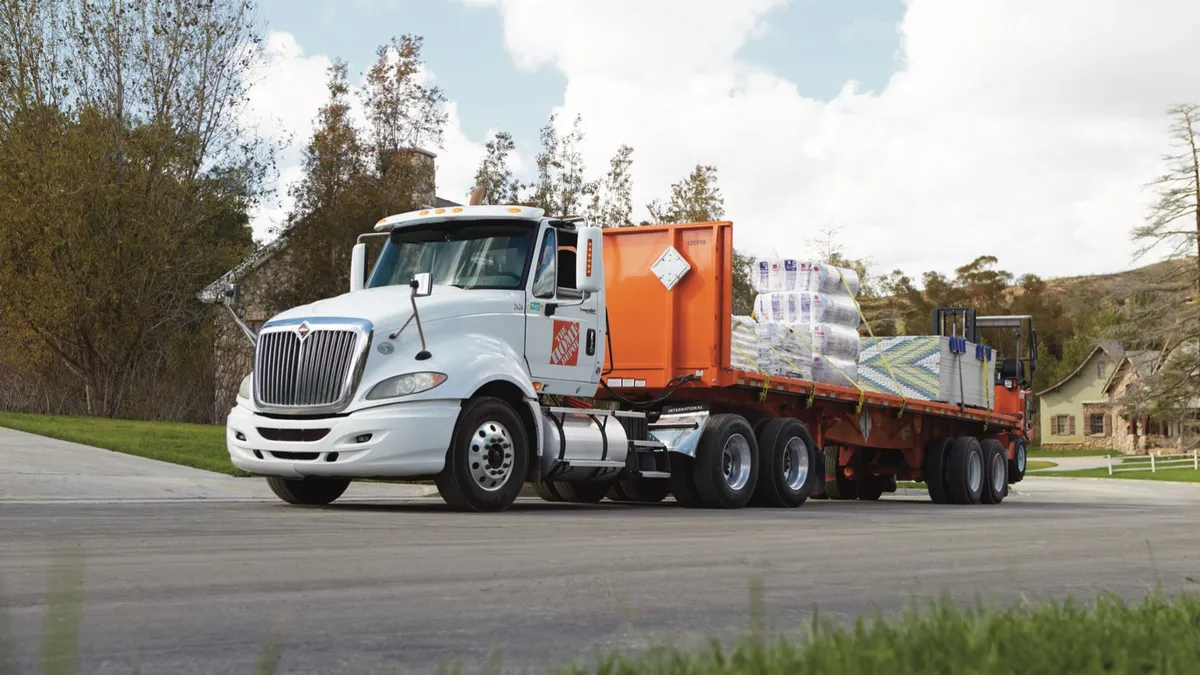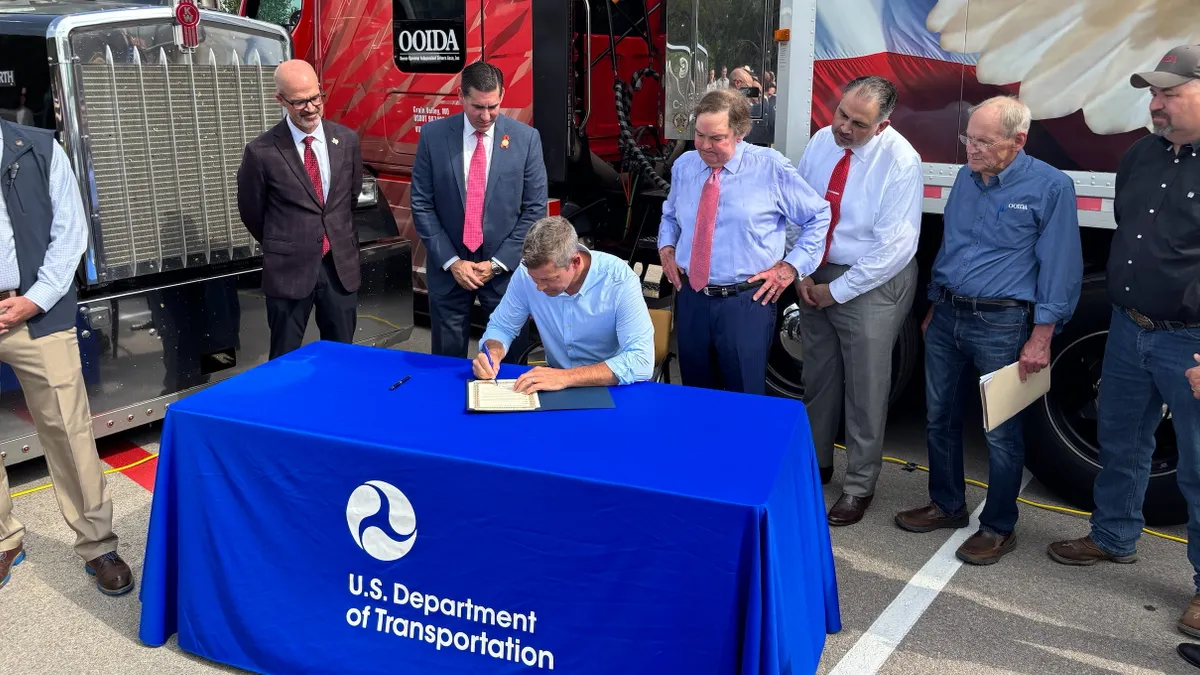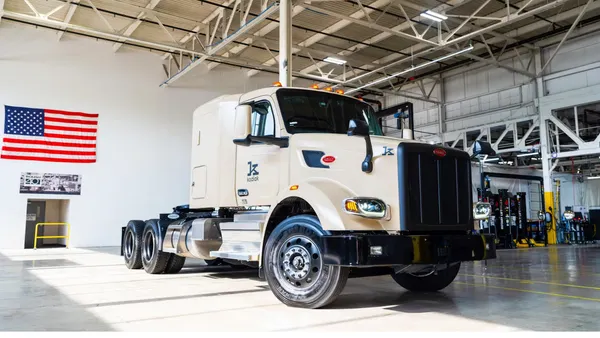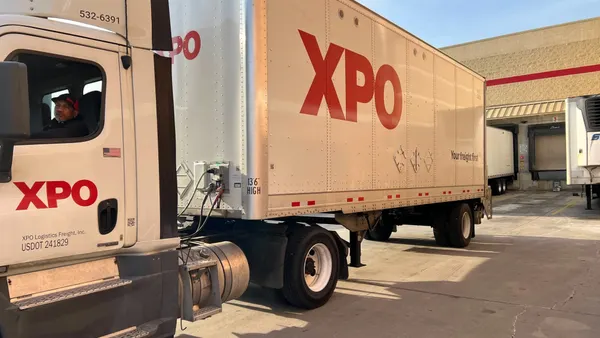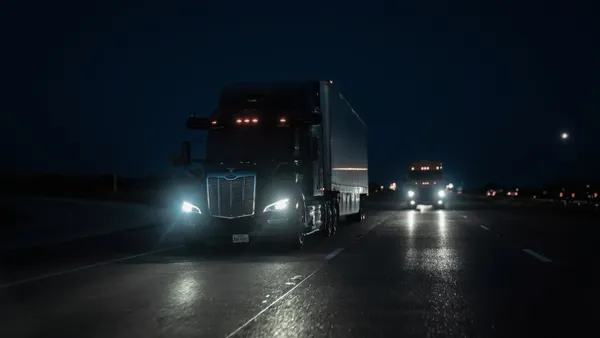Fewer miles traveled and less unused space are a good place to start for an efficient supply chain. They're also a good place to start to reduce emissions, according to Home Depot VP of Transportation Michelle Livingstone.
"As we try and improve the efficiency of our supply chain, it actually results in massively better sustainability measures," Livingstone told Transport Dive sister publication Supply Chain Dive in an interview Wednesday.
Home Depot has pledged to reduce its Scope 1 and 2 emissions 40% by 2030 and 50% by 2035 compared to 2011. The company announced Thursday it made a 10% reduction from 2018 to 2019. And when it comes to transportation, that progress is about tracking efficiency and working with partners.
The company has worked with suppliers to load trucks without pallets to maximize space usage and utilized technology at inbound facilities to ensure storage space is optimized — all to reduce emissions.
A tech-driven planning process, route optimization and AI-based monitoring of engine utilization and load weight help to optimize Home Depot's in-house fleet for fuel efficiency and emissions.
There are also times when the retailer finds it best to take over a task entirely from the supplier.
"In many cases, we know that we can do it more efficiently than our vendor base," Livingstone said. "Where it makes sense for us to convert terms of purchase from prepaid to collect, we're doing that ... and that allows us to have back hauls, and to use our equipment more efficiently."
Electrification on the horizon?
Optimization is only part of the journey toward drastically lower emissions in transport. The be all end all of fleet emissions reduction is electrification.
"The biggest leap that any company can do is to commit to electrification," Anand Gopal, climate initiative program officer at the William and Flora Hewlett Foundation, told Supply Chain Dive.
Home Depot's largest fleet is the box trucks it uses to deliver to job sites. Livingstone said the retailer is looking at an electrification pilot in the future, and some of its dedicated fleet carriers are piloting electric trucks. Regulations may speed electric fleet adoption as California passed legislation requiring every new truck sold in the state by 2045 to be zero-emission.
Bulk freight like building materials — Home Depot's bread and butter — makes the electric conversion more difficult, as heavy loads can decrease the mileage range for an electric truck. But Ron Jarvis, Home Depot's VP of merchandising and sustainability, said electrification is looking more likely every year.
"Forever, sustainability was a push mentality," said Jarvis, who has been with the company for more than 25 years and has headed sustainability for 13. "Push the suppliers ... push the transportation team. I know that as soon as electrification becomes a mainstay, Michelle [Livingstone] and her team are not going to have to go out and push and beat up the suppliers, and the transportation companies to try to get in line... Everyone wants to be leaders in sustainability."
The major barrier to electrification remains cost, Jarvis said, although battery costs have fallen 80% over the last eight years and could fall another 50% over the next decade, according to a study from Ceres and the California Trucking Association.
"As people continue to request that, the cost will come down," he said.
Building capacity for the long haul
The retailer still has a ways to go to match the likes of Walmart or Target in terms of emission reduction targets. Home Depot has set targets for its Scope 1 and Scope 2 emissions, which covers everything the company owns and operates in accordance with CDP's reporting standards. But it has yet to set a target for Scope 3 emissions, which covers everything it purchases or hires, including freight.
Scope 3 is the largest segment of emissions for almost any company. Jarvis has begun that work but isn't yet ready to commit to a reduction target.
"We wanted to make sure that when we do a Scope 3, that we put a lot of thought into it," Jarvis said. "And we just weren't ready for it."
The data to measure emissions reduction efforts, specifically miles traveled and cube optimization — route utilization and carbon emissions — comes through the company's supply chain analytics department, which is in charge of reigning in cost and emissions together.
"Our supply chain analytics team ... [has] the ability to take all of this data from multiple sources, and slice and dice it any way we need it," Livingstone said.



